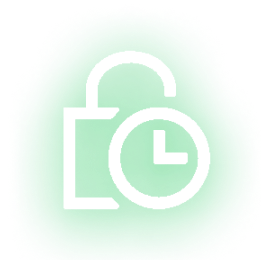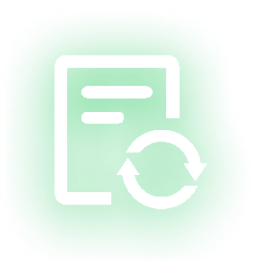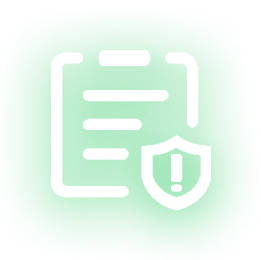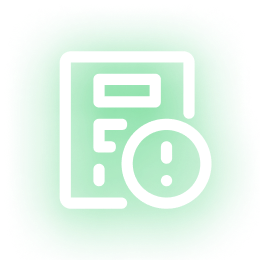All-in-one Website Monitoring Solution
-

- Uptime Monitoring
- Continuously monitor website uptime.
-

- SSL Monitoring
- Ensure SSL certificate validity to prevent browser security warnings.
-

- Domain Monitoring
- Mitigate business continuity and security risks related to domain expiration.
-

- DNS Monitoring
- Retrieve domain resolution status from major DNS providers.
-

- Defacement Monitoring
- The first line of defense against website defacement and unauthorized content changes.
-

- Keyword Monitoring
- Periodically monitor website content for specified keywords.
-

- Data Leak Check
- Protect against leaks of Pll, Cloud Keys, and other sensitive data.
-

- External Link Check
- Monitor changes in external link count and uptime.
-

- Reputation Check
- Assess risk and reputation of referenced IPs and domains.
-

- Malicious Code Check
- Continuously detect malicious code injections.
-

- HTTP Header Check
- Check HTTP security header configuration.
-

- Website Technology Check
- Analyze website technology stack.
Knowledge Hub > Monitor
Explore educational articles to deepen your understanding in technical domains.
-
Keyword Monitoring Explained
Description Keyword monitoring is a technology that automates the scanning of website content through predefined specific words or phrases. The system periodically crawls target web pages based on preset rules, rapidly parsing and matching text information. When predefined keywords are detected in page titles or content, it immediately triggers alert notifications. Its core function lies in efficiently capturing sensitive information, non-compliant content or non-compliant content – for instance, enterprises can use compliance-related keywords to identify violations. Key features include: Automated Detection: Regularly scans and analyzes textual content for exact or partial keyword matches. Real-Time Alerts: Notifies users immediately upon detecting keywords, enabling swift responses to risks like data leaks or reputational harm. Flexibility: Supports custom keyword lists tailored to specific use cases. Steps of Keyword Monitoring Keyword Monitoring is a proactive security measure designed to detect sensitive, policy-violating, or business-critical keywords in real time. By combining automated scanning with human oversight, it ensures timely responses to potential risks. Below is a detailed workflow: 1. Keyword Configuration Define custom keyword libraries tailored to your needs, such as sensitive terms, non-compliant terminology, or industry-specific phrases. 2. Content Scanning Web crawlers automatically collect data from target pages, extracting text content for analysis. 3. Matching Algorithm Advanced pattern recognition using rule-based engines or regular expressions ensures precise text comparison. 4. Alert Triggering Instant email notifications are sent to designated personnel upon keyword detection, including contextual code snippets and event snapshots. 5. Manual Review All alerts undergo human verification to prevent false positives and ensure accurate handling of legitimate content. Main Functions of Keyword Monitoring Keyword monitoring has become a critical tool across industries due to its high efficiency and precision in content identification. Its applications span diverse scenarios: •Content Security: Automatically screen websites and forums for politically sensitive keywords, terrorist incitement, abusive language, or…
-
Defacement Monitoring: Protect Your Website from Malicious Tampering
Defacement monitoring is a specialized technical process that continuously tracks unauthorized alterations to website code, visible content, or structural elements to detect malicious tampering. Its core objective is to safeguard website integrity, compliance, and availability. This proactive solution combines real-time alerts and forensic analysis to mitigate risks such as malicious code, downtime, or reputational damage. By focusing on security-driven content verification, it strengthens defenses against cyberattacks while maintaining user trust in the website’s authenticity and reliability. How Website Defacement Monitoring Works? • Data Initialization Upon the addition of website monitoring tasks, immediately crawl the target page to capture complete code (HTML, JavaScript, etc.) and visual rendering results. Generate a baseline snapshot stored as a reference for future comparisons. • Periodic Crawling Use automated scripts to periodically fetch the latest page content. Perform differential analysis by comparing new data with historical records. • Code Comparison Regularly retrieve page source code and generate unique identifiers (e.g., via MD5, SHA-1 hash algorithms) to detect discrepancies between versions. • DOM Tree Analysis Traverse and analyze the DOM structure to inspect additions/deletions of nodes or attribute modifications. • Visual Difference Detection Conduct screenshot comparison to analyze pixel-level differences, revealing unauthorized image replacements or overlaid anomalous elements. Defacement monitoring ensures accurate detection of website content tampering or malicious code injections, while maintaining audit trails for compliance and forensic investigations. Core Concepts of The DOM Tree Tree Structure Logic The DOM tree is organized as a hierarchical structure, starting with the document’s root node (<html> tag). All HTML elements, attributes, and text content are represented as nodes, forming a tree-like hierarchy. Node Types Nodes in the DOM tree are categorized into distinct types: Element Node: Represent HTML tags (e.g., <div>, <a>). These form the core structural components of the DOM…
-
DNS Monitoring: Keeping the Internet’s Address Book Alive
DNS Monitoring is a technical solution that enables real-time tracking of DNS resolution anomalies. By sending query requests to target DNS servers and analyzing response results, this technology can determine whether domain resolution is being blocked, thereby ensuring websites remain globally accessible.
-
Domain Monitoring: Full-Lifecycle Monitoring Framework
What Is Domain Monitoring? As the core gateway for enterprise online operations, domain lifecycle management faces a critical challenge: uncontrolled expiration risks. Domain expiration not only leads to website downtime and service interruptions, but may also trigger security risks like phishing attacks through malicious domain takeover. Domain monitoring not only proactively prevents business disruptions but also serves as a strategic safeguard to protect enterprise digital assets and ensure operational continuity. Best Practice of Domain Monitoring In practice, effective domain monitoring must resolve three critical challenges: 1. Dynamic Tracking of Domain Status: Implement real-time monitoring of expiration timelines and instant detection of domain status changes. 2. Tiered Alert Mechanisms: Establish differentiated alerts, including pre-expiration notifications (30, 14 and 7 days before expiration) and post-expiration emergency alerts. This multi-layered solution ensures timely risk mitigation through real-time status tracking. 3. Avoiding Secondary Risks: Automated domain monitoring tools can prevent risks linked to expired domains. Manual inspection further enhances threat identification, helping detect threats such as phishing scams and counterfeit brand impersonation. It is important to note that domain monitoring is not an isolated component. It is typically integrated with SSL monitoring and DNS monitoring to form a complete domain security protection framework. This interconnected approach not only mitigates service disruptions caused by short-term oversights but also enables long-term optimization of domain resource allocation through data analysis. Lifecycle of a Domain Name 1. Validity Period (1 to 10 years) Determined by the duration selected during registration. The domain becomes active upon successful registration or renewal. During this phase, the domain remains fully functional for DNS management, transfers, and updates. 2. Grace Period (Typically 30 days) Automatically triggered if the domain expires without renewal. Limited functionality applies during this phase, but the domain can be reactivated by renewing it. 3. Redemption Period (Typically 30 days)…
-
SSL Monitoring: The Cornerstone of Website Security
What Is SSL Monitoring? SSL certificates serve as the core security component of internet communication, acting as a “digital ID card” for websites. They employ encryption technology to ensure data transmission between users and servers remains protected from interception or tampering, while also displaying a padlock icon in the browser’s address bar to build user trust. SSL certificate monitoring refers to the full lifecycle management of these certificates, encompassing both validity period tracking and configuration compliance checks. This process aims to prevent security risks caused by certificate failures. Core Indicators of SSL Monitoring Validity Period Remaining Days: Track the certificate’s expiration countdown, with renewal alerts typically triggered 30 days prior to expiration. Issuance Time Rationality: Verify that certificates do not contain anomalous future or past timestamps. Identity and Authorization Domain Coverage: Ensure SSL certificates encompass all operational domains, such as root domains, subdomains, and wildcard certificates. CA Trustworthiness: Confirm certificates are issued by trusted Certificate Authorities such as GeoTrust or DigiCert. Real-Time Status Revocation Status: Check SSL certificate revocation status in real time via the OCSP protocol. Multi-Node Consistency: Verify certificate status from distributed nodes to eliminate false positives from localized caching or network disruptions. What Are the Functions of SSL Monitoring? Service Disruption Prevention: Avoid browser blocking of user access caused by certificate invalidation. Common examples include Chrome’s “Your connection is not private” warning. Security Threat Mitigation: Protect against risks such as user data theft caused by certificate misconfigurations (e.g., domain mismatches). Compliance Adherence: Ensure your SSL certificate complies with GDPR and other regulations’ mandatory requirements for encrypted communication and certificate management. User Trust Preservation: Eliminate browser security warnings that harm brand reputation and ensures seamless user experience. Conclusion SSL Monitoring is an indispensable component of cybersecurity frameworks. By tracking key metrics such as certificate…
-
Uptime Monitoring: Stop Worrying About Website Down!
What Is Uptime Monitoring? Uptime monitoring is a technology that utilizes automated tools to continuously check a website’s operational status, with the core objective of ensuring stable and fast access for users. Monitoring tools regularly send requests to target websites while analyzing response statuses, speed, and content accuracy. Upon detecting service interruptions – including inaccessible services, timeouts, or error status codes – they immediately trigger alerts. This enables operations teams to rapidly identify and resolve issues, thereby minimizing the impact of website downtime on user experience. Does Uptime Monitoring Affect Website Performance? Many users worry: Will frequent monitoring activities slow down website performance? In reality, professional monitoring solutions are carefully designed to have almost no substantial impact on website performance, for three key reasons: Lightweight Check Requests: Only retrieve HTTP status codes and basic performance metrics, without executing high-load operations. Low-Frequency Triggers: Typically no more than one HTTP request per minute (similar to regular user browsing behavior). Code-Free Implementation: Require no code integration, plugins, or SDK installations on your website. How Website Uptime Monitoring Works? The implementation of uptime monitoring typically follows these steps: Global Node Deployment Establish monitoring nodes across multiple geographic regions worldwide. Simulated User Access Initiate user behavior simulations through preconfigured nodes in different locations to access target websites. Scheduled Monitoring Send requests at configured intervals (e.g., every 5 minutes) to verify normal website responsiveness. Multi-Dimensional Analysis Response Time: Calculate request-to-full-response duration to evaluate website performance Status Code: Confirm returned HTTP codes match expected values (e.g., 200 OK verification) Alert Notification Trigger real-time notifications to designated personnel upon detecting anomalies (timeouts/error codes). Visualization Dashboard Store all task results and generate availability statistics reports for long-term stability trend analysis. By integrating 24/7 real-time monitoring, multi-node intelligent diagnostics, and historical data analysis, an end-to-end website uptime management system is…


